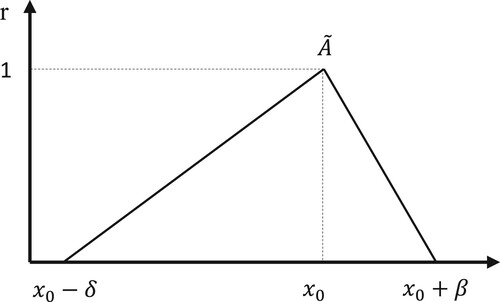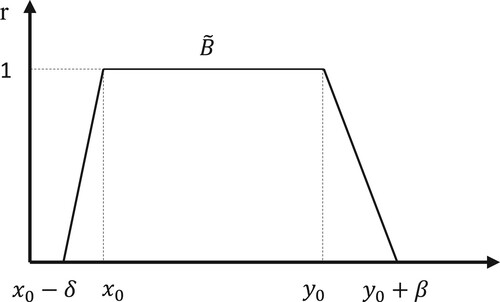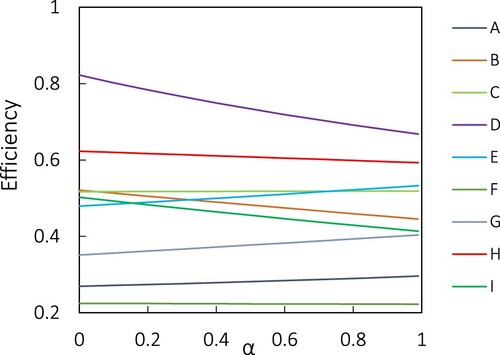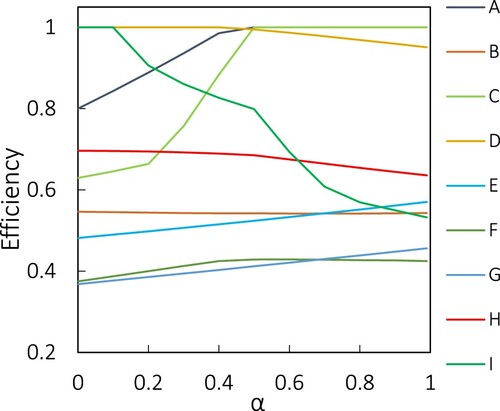Figures & data
Table 1. The data set for a simple hypotehetical fuzzy two-stage DEA example.
Table 2. function of input, intermediate and output fuzzy data in example 1.
Table 3. Efficiencies of DMUs in two-stage DEA model with the assumption of CRS.
Table 4. Ranking DMUs under CRS assumption for three different α’s.
Table 5. Efficiencies of DMUs in two-stage DEA model with the assumption of VRS.
Table 6. Ranking DMUs under VRS assumption for three different ’s.
Table 7. Triangular fuzzy input, intermediate and output data of 24 insurance companies in Taiwan.
Table 8. Efficiency scores of 24 insurance companies in Taiwan with the assumption of CRS.
Table 9. Efficiency scores of 24 insurance companies from different approaches with the assumption of CRS (α = 0).
Table 10. Efficiency scores of 24 insurance companies in Taiwan with the assumption of VRS.






